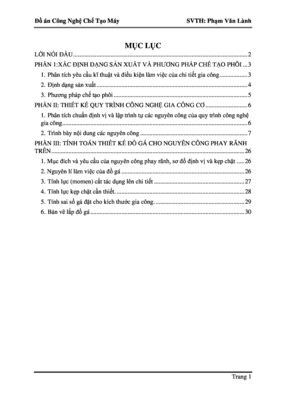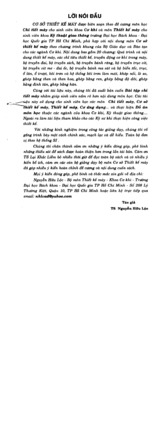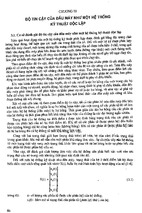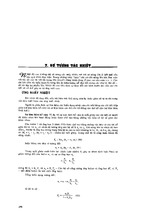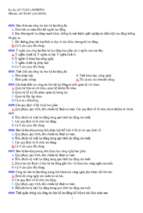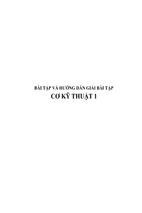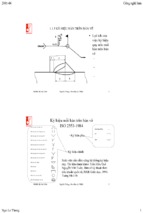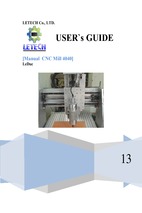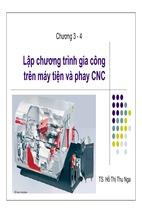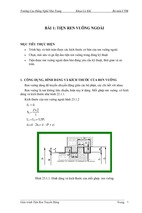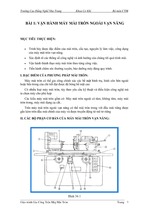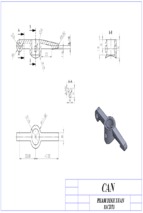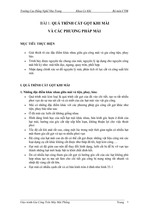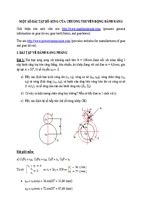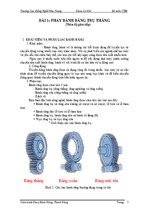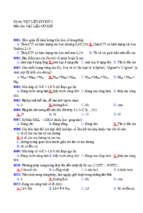Mô tả:
Adhesive Manufacturing Processes
Chapter 5: Joint Element Materials
Univ.-Prof. Dr.-Ing. Prof. h.c. Stefan Böhm
Fachgebiet Trennende und Fügende Fertigungsverfahren (tff)
Universität Kassel
Quelle: Wikipedia
Agenda
Introduction
Adhesive Properties - Metal
Adhesive Properties – Synthetic Materials
Adhesive Properties - Glass
Adhesive Properties – Wood
Adhesive Proerties - FVK-Materials
Material Combinations
Conclusion
2
Introduction
Surface Layers of Metalic Materials
Foreign Substance
Layer
Adsorption Layer
Reactionary Layer
Metallic
Basic Material
Boundary Layer
Schematic depiction of the surface layers of metallic material
(Source: Habenicht)
3
Introduction
Depiction of the relevant layer thickness in relation to each other
Adsorption Layer
Reactionary Layer
Metallic Base Material
Boundary Layer
– Adsorption Layer
– Reactionary Layer
– Boundary Layer
● The foreign substance layer (dirt) has no defined thickness.
(Source: Habenicht)
4
Introduction
Foreign Substance
Layer
Boundary Layer
Adsorption Layer
Reactionary Layer
Layer Thickness: 0.1-100μm
Metallic Nase Material
Boundary Layer
The boundary layer is formed by deformation processes and/or through cutting
and is very strong.
(Source: Habenicht, S.2965ff)
5
Introduction
Foreign Substance
Layer
Reactionary Layer
Adsorption Layer
Reactionary Layer
Thickness: 0.01-0.1 µm
Metallic Base Material
Boundary Layer
The reactionary layer is formed by chemical changes within the boundary layer.
● This reaction can be natural or can be caused intentionally
This layer is connected strongly to the boundary layer through primary valence
bonds
The reactionary layer is primarily responsible for the formation of
adhesion forces
(lSource: Habenicht)
6
Introduction
Foreign Substance
Layer
Adsorption Layer
Adsorption Layer
Reactionary Layer
Thickness: 0.001-0.01µm
Metallic Base Material
Boundary Layer
The adsorption layer is formed through the intake of molecules from the
environment.
● The formation processes are mostly reversible.
(Source: Habenicht)
7
Introduction
Foreign Substance
Layer
Dirt
Adsorption Layer
Reactionary Layer
Metallic Base Material
Boundary Layer
Layer thickness cannot be defined
The foreign substance layer (dirt) can be made of:
● Oil
● Dust
● Greases
● Humididty
(Source Habenicht)
8
Introduction
Foreign Substance
Layer
Metallic Coatings
Adsorption ayer
Reactionary Layer
Metallic Base Material
Boundary Layer
Further surface layers can be created by adding metallic coatings.
● for example in galvanized/ tinned plates,
● plated aluminium alloys or
● metallised plastics
These layers lie between the boundary layer and the reactionary layer.
(Source: Habenicht)
9
Introduction
As described in the chapter regarding the adhesive forces, the surface
energies are significant for the adhesive bonding possibilities
Surface Energy [mN/m]
Iron
2550
Titanium
2050
…
…
Silver
1250
…
PVC
40
…
…
PTFE (Teflon)
19
The surface energy has a direct impact on the quality of the wetting, which
again is the prerequisite for an optimal adhesion
10
Introduction
This allows the general conclusion that, as regards surface energies, metal
bonds are unproblematic.
● Surface energies > 1000 mN/m
Difficulties occur when the surface has negative properties:
● Oiled surface (protection against corrosion)
● not very solid oxide layer
● roughness (viscosity of the adhesive)
● …
11
Introduction
Synthetics have much lower surface energies, which limits the possibilities, if
bonding adhesively without prior treatment.
● Surface energies between 19 mN/m and 47 mN/m
Depending on the synthetic, further negative properties can influence the
adhesive bonding properties.This is very important to regard concerning the
ageing resistance:
● contained softeners
● separating agents on the surface
12
Introduction
Apart from metallic and synthetice surfaces, there is another surface structure
that is especially porous
● This includes:
– wood, plywood, balsa wood, chipboards, veneers, cork
– paper, cardboard, carton
– textiles, felt, leather
– porcelain, ceramic, terracotta, concrete, marble, artificial stones
– plastic foam
Speciality: micro-mechanical form lock, mechanical adhesion
13
Agenda
Introduction
Adhesive Properties - Metal
Adhesive Properties – Synthetic Material
Adhesive Properties - Glass
Adhesive Properties – Wood and Ceramics
Adhesive Properties – FVK-Materials
Material Combinations
Conclusion
14
Adhesive Properties - Metal
Corrosion Resistant Steels – Stainless Steel
15
Corrosion Resistant Steels – Stainless Steel
Characteristics
● After formation of passive layer very good corrosion resistance
● high-strength and wear-resistant
● weldable
● temperature-resistant
● hygenic
● conductive
16
Corrosion Resistant Steels – Stainless Steel
Fields of Application
● When a high resistance to weather is needed, especially in long-term conditions.
● Chemical Industry
● Medical Industry
althammer.de
● Food Industry
UNIPACK
17
Corrosion Resistant Steels – Stainless Steels
The most important corrosion resistant steels
● V2A - X5 Cr Ni 18 10 (WNr.: 1.4301)
– food industry, chemical machiners... (33% of the production)
● V4A - X2 Cr Ni Mo 17 13 2 (WNr.: 1.4404)
– pharmaceutics, medicine und dentistry… (highly resitant to chlorine containing media)
● V4A - X6 Cr Ni Mo Ti 17 12 2 (WNr.: 1.4571)
– chemical machinery, submarine constructions…
● As well as austenitic Cr Ni-steels 1.4376 and 1.4377
18
Corrosion Resistant Steels – Stainless Steel
Adhesive Properties of the Surface
● The steels form a passive layer at the surface
– this is mainly based on the amount of containeds chrome which reacts with the
surrounding oxygene.
● The passive layer leads to a chemically hardly reacting surface
● This strongly limits intermolecular bonds and bonds created through
chemisorption
19
Corrosion Resitant Steels – Stainless Steel
Possible Surface Treatments:
Degreassing and cleaning
SACO
● Sufficient resistance to ageing
Mechanical Pretreatments (grinding, brushing, blasting)
● Good starting hardness
● Adhesive bond that is sensitive to the materials
20
- Xem thêm -


